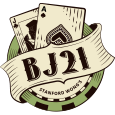Obsolete thinking (long post)
I�m sorry, but the advice given on your site is obsolete. Let�s face it; your site makes fun of card counters on a continual basis. There are many of us that still prefer to play by pure card-counting instead of leaning over backwards to peek at hole cards or seconds. In my opinion, your advice on CC has been outdated. In these days of stiff competition, very poor indeed. But I will only speak to your comments on True Edge in this post.
First, I believe I paid Arnold a well earned compliment on his invention of True Edge. I thought it was a good guesstimate at optimal betting. But, let us start with some history. A week or two after Arnold published BiB2 (1998,) I had a phone conversation with him. I told him that I believed True Edge caused a bit of a problem because no current simulators could handle the fact that some people would want to raise their bets at fractional TEs. The problem was what I now call True Count compression. At the time I quickly modified CVSim to allow half-TE betting. His comment in your referenced post that I do not understand that TE is TC is (fill in the word of your choice here.) He knows me better than that.
Fast forward. Optimal betting theory was fleshed out - Brett Harris, Winston Yamashita and Karel had their famous arguments and DD� created his spreadsheets and BJRM, then CVCX were created. Once the dust settled, we had accurate methods of calculating precise betting ramps. And, they turned out to be quite different from TE. I added a tiny bit by using a feedback mechanism to create optimal rationally sized bets.
In the post you link to we see �The True Edge method is simply an easier and more accurate method of calculating your approximate increase (or decrease) in advantage.� Yes, exactly It was a good approximate method for its time. What I am saying is that time and science move on and that modern methods, after all the angst in the mathematic discussions, are superior. Substantially superior as it turns outs.
But, I am also saying much more than that. There is a fundamental flaw in True Edge that I have discussed at length in Don�s Domain. I will provide one of my posts on the subject below, although it may not be enough for all to understand the issue in its entirety.
I�ve used the term True Count Compression several times over the last year and thought it deserved a chart to better describe the effect. An obvious example is the original version of Zen and the True Edge version of Zen. In the original version, true count was calculated by dividing by the number of full decks remaining. In the second version, division is by quarter decks remaining. That is, the divisor is four times the size. Obviously, indexes and betting ramps are adjusted to accommodate the different divisor. But, there is a problem. When you use a larger divisor, you end up with a much smaller range of possible True Counts. The chart below illustrates this effect. The distribution of True Counts for each methodology is displayed in a 4.5/6 game.

In this chart, you see that using True Edge Zen, nearly 60% of all rounds began with a TC of zero. The vast majority began with TCs of -1 to +1. 99.6% of TCs fell in the range -3 to+3. But in the original Zen, the TCs were distributed over a much larger range of TCs. This affects both playing and betting. For playing indexes, there is substantially less resolution in the indexes. This makes index memorization easier, but reduces accuracy. In betting there are two problems. First, it is more difficult to come up with an acceptable optimal betting ramp with such a narrow range of counts. Secondly, in a good game, you should increase your bet well before +1. Closer to a TC of +.5. But, people don�t normally deal with fractional counts.
Now I am a fan of simplified indexes. But, the betting I saw as more of a problem. When the True Edge version came out, I quickly modified CVSim to allow collection of data by half counts and specification of a betting ramp by half counts as I felt people would have to start increasing bets at +0.5. I dropped this feature in CVData as I now simply believe it is easier to not divide by quarter decks for level II systems or half-decks for level I systems.
Now this is just one of many posts I�ve made on the subject and won�t pull them all off of Don�s Domain. And it is just now that I have spent time with this issue even though it bothered me seven years ago enough to tell Arnold. But, I will say that TE damages Zen substantially, particularly in betting as I have detailed in other posts. In fact it is clear to anyone that understands basic BJ theory that you are incorrect in your claim that "True Edge provides for greater betting accuracy and a higher score" This is clearly incorrect. I will also say that this is a pity since Arnold�s Zen is a truly great strategy. I advise it to people to this day. But, I advise them to use the version in the first edition of BiB and to completely ignore True Edge.

www.Blackjack-Scams.com>














